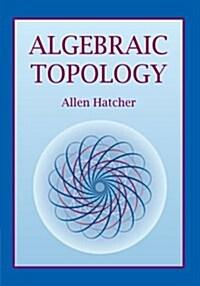책 이미지

책 정보
· 분류 : 외국도서 > 기술공학 > 기술공학 > 전력자원 > 일반
· ISBN : 9781119718666
· 쪽수 : 256쪽
· 출판일 : 2021-11-23
목차
Preface ix
Acknowledgments xi
Acronyms xii
Mathematical Notation xvi
About the Companion Website xviii
1 Massive IoT 1
1.1 Selected Use-cases and Scenarios 4
1.2 Key Technologies 6
1.3 Requirements and KPIs 10
1.4 Key Enablers 12
1.4.1 Holistic and Globally Scalable Massive IoT 12
1.4.2 Sustainable Connectivity 13
1.5 Final Remarks and Discussions 17
2 Wireless RF Energy Transfer: An Overview 20
2.1 Energy Harvesting 20
2.1.1 EH Sources 20
2.1.2 RF Energy Transfer 22
2.2 RF–EH Performance 24
2.2.1 Analytical Models 24
2.2.2 State-of-the-art on RF EH 26
2.3 RF–EH IoT 30
2.3.1 Architectures of IoT RF EH Networks 30
2.3.2 Green WET 31
2.3.3 WIT-WET Layouts 32
2.3.4 RF EH in IoT Use Cases 32
2.4 Enabling Efficient RF-WET 35
2.4.1 Energy Beamforming 35
2.4.2 CSI-limited Schemes 35
2.4.3 Distributed Antenna System 37
2.4.4 Enhancements in Hardware and Medium 37
2.4.5 New Spectrum Opportunities 39
2.4.6 Resource Scheduling and Optimization 40
2.4.7 Distributed Ledger Technology 41
2.5 Final Remarks 41
3 Ambient RF EH 43
3.1 Motivation and Overview 43
3.1.1 Hybrid of RF–EH and Power Grid 45
3.1.2 Energy Usage Protocols 46
3.1.3 On Efficient Ambient RF–RH Designs 48
3.2 Measurement Campaigns 51
3.2.1 Greater London (2012) 52
3.2.2 Diyarbakir (2014) 52
3.2.3 Flanders (2017-2019) 53
3.2.4 Other Measurements 54
3.3 Energy Arrival Modeling 55
3.3.1 Based on Arbitrary Distributions 56
3.3.2 Based on Stochastic Geometry 56
3.4 A Stochastic Geometry-based Study 57
3.4.1 System Model and Assumptions 57
3.4.2 Energy Coverage Probability 59
3.4.3 Average Harvested Energy 62
3.4.4 Meta-distribution of Harvested Energy 63
3.4.5 Numerical Results 64
3.5 Final Considerations 67
4 Efficient Schemes for WET 68
4.1 EH from Dedicated WET 68
4.2 Energy Beamforming 68
4.2.1 Low-complexity EB Design 71
4.2.2 CSI-limited Energy Beamforming 74
4.2.3 Performance Analysis 76
4.3 CSI-free Multi-antenna Techniques 80
4.3.1 System Model and Assumptions 81
4.3.2 Positioning-agnostic CSI-free WET 82
4.3.3 Positioning-aware CSI-free WET 94
4.4 On the Massive WET Performance 96
4.5 Final Considerations 98
5 Multi-PB Massive WET 99
5.1 On the PBs Deployment 99
5.1.1 Positioning-aware Deployments 99
5.1.2 Positioning-agnostic Deployments 104
5.2 Multi-antenna Energy Beamforming 109
5.2.1 Centralized Energy Beamforming 110
5.2.2 Distributed Energy Beamforming 111
5.2.3 Available RF Energy 111
5.3 Distributed CSI-free WET 113
5.3.1 SA, AA–IS and RPS–EMW 113
5.3.2 AA–SS 114
5.3.3 RAB 117
5.3.4 Positioning-aware CSI-free Schemes 118
5.3.5 Numerical Examples 118
5.4 On the Deployment Costs 120
5.5 Final Remarks 123
6 Wireless-powered Communication Networks 125
6.1 WPCN Models 125
6.2 Reliable Single-user WPCN 127
6.2.1 Harvest-then-transmit (HTT) 127
6.2.2 Allowing Energy Accumulation 130
6.2.3 HTT versus FEIPC 135
6.3 Multi-user Resource Allocation 139
6.3.1 Signal Model 140
6.3.2 Problem Formulation 141
6.3.3 Optimization Framework 142
6.3.4 TDMA versus SDMA 143
6.4 Cognitive MAC 145
6.4.1 Time Sharing and Scheduling 148
6.4.2 MAC Protocol at the Device Side 150
6.4.3 MAC Protocol at the HAP Side 151
6.5 Final Remarks 152
7 Simultaneous Wireless Information and Power Transfer 155
7.1 SWIPT Schemes 155
7.2 Separate EH and ID Receivers 156
7.2.1 Problem Formulation 157
7.2.2 Optimal Solution 158
7.2.3 Performance Results 159
7.3 Co-located EH and ID Receivers 160
7.3.1 Time Switching 162
7.3.2 Power splitting 165
7.3.3 TS versus PS 167
7.4 Enablers for Efficient SWIPT 171
7.4.1 Waveform Optimization 171
7.4.2 Multicarrier SWIPT 174
7.4.3 Cooperative Relaying 175
7.4.4 Interference Exploitation 176
7.4.5 Artificial Intelligence 177
7.5 Final Considerations 177
8 Final Notes 179
8.1 Summary 179
8.2 Future Research Directions 182
A A Brief Overview on Finite Block Length Coding 187
A.1 Finite Block Length Model 187
B Distribution of Transferred RF Energy Under CSI-free WET 191
B.1 Proof of Theorem 4.2 191
B.2 Proof of Theorem 4.4 192
C Clustering Algorithms 198
C.1 Partitioning Methods 198
C.1.1 K-Means 199
C.1.2 K-Medoids 199
C.1.3 K-Modes 199
C.2 Hierarchical Methods 200
C.3 Other Methods 200
C.4 Pre-processing 201
D Required SNR for a Target Decoding Error Probability (Proof of Theorem 6.1) 202
D.1 On the Convergence of Algorithm 3 203
Bibliography 205
Index 226

























